Grizedale – mankind muscling in
- Green Fingers
- Mar 24, 2024
- 16 min read
Week 12
Once again this is a long one, so please find somewhere quiet to read and ponder. Climate change and the future of mankind is no longer an observer occupation. I like to think we all agree.
If you can support me in some small way, and this is a suggestion not a request, you will find a Buy Me A Coffee button at a couple of points in the text. Please feel free to ignore it, but if you take a break to have a cuppa, maybe I can have one, too. With that, here goes...
A horrid fortnight
It has been a horrid fortnight as the heavens have opened and I have spent much time driving through surface floodwaters and seeing daffodils crushed by torrential downpours. Not only my daffodils but everyone else’s, too. There has been no chance of survival for any of the season’s early flowers, especially those where the protective trees that normally hang over them have been felled, or not yet leafed out.
Grizedale Forest
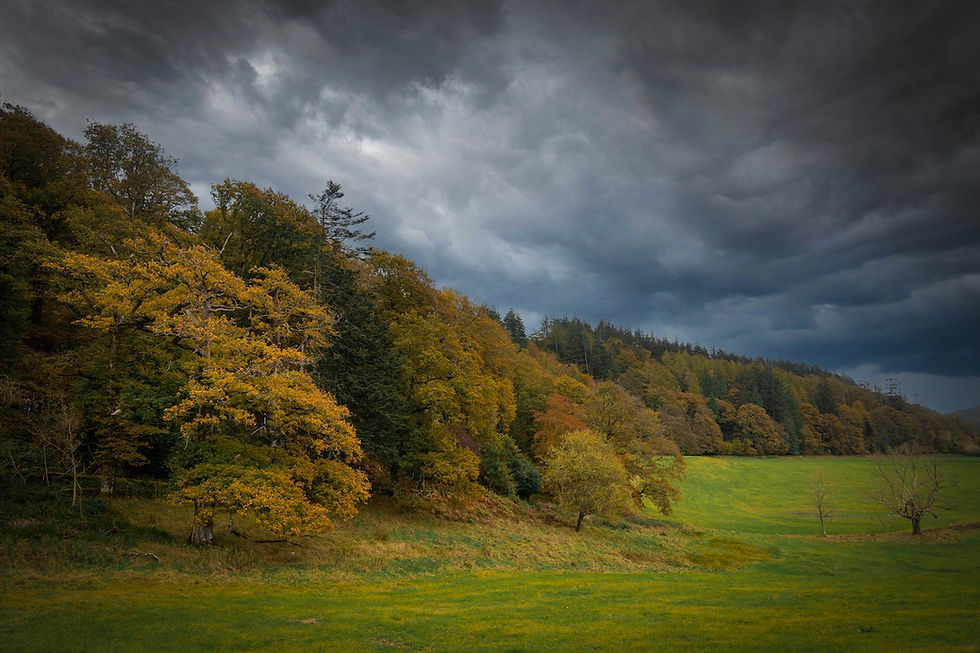
A popular place to visit in the Lake District is Grizedale Forest[i], nearly 25km2 of woodland to the east of Coniston Water, to the west of Windermere, and immediately south of Hawkshead. Recreationally, Grizedale is managed for multi-purpose objectives. In recent years various companies have partnered with Forestry England, the owners of Grizedale Forest, to provide recreation facilities for the public. This has made Grizedale a major visitor destination in the Lake District National Park leading to nearly 200,000 visitors every year.
The U-Boat Hotel
Grizedale’s current car park is on the site of the former Grizedale Hall, the modern version of which was built in 1905, although building in that location was first noted around 1614. During the Second World War Grizedale Hall became a prison for German officers, many of whom were rescued survivors from sunken U-boats, so the Hall then became known as the "U-Boat Hotel”.

One German officer, Franz Xaver von Werra[ii], even managed to escape Grizedale Hall in October 1940, although he was recaptured five days later. Indeed, he escaped from multiple establishments over the following six months and eventually made it back to Germany by April 1941. Although von Werra became a national hero, he sadly died on a practice flight in October 1941 at the age of 27 years. His story formed the basis of the film “The One That Got Away”[iii]. The Hall from which he escaped was eventually pulled down in 1957.
It does not surprise me that von Werra only lasted five days in the Lake District before he was captured as it is an area that knows how to be unfriendly. It is certainly very wet. Only seven days ago even I became lost, so distracted was I by an animal track, that before I knew it the dense mist had disorientated me and I rapidly became adrift. Thankfully, I reorientated myself speedily but the lesson for all who walk the Lake District fells is to never be complacent. Always carry a map with you, or at least some form of navigation, however confident you may be.
Foraging
An advantage of living locally is that I can reach many places before the crowds, although this sometimes gives a false impression of remoteness. Grizedale Forest is along plenty of single lane roads, through floods, into potholes, and many near misses for wing mirrors on rigid Lakeland walls. Once I arrived, fortuitously intact, there were only two other cars, each driven by a forager. Grizedale is a forager’s Heaven, particularly before the crowds arrive.
Ground elder
Ground elder (Aegopodium podagraria) has begun to appear and is generally hated by gardeners as it is so fast spreading. It forms dense clumps of leaves that out-compete other plants for water and nutrients. Its rhizomes can grow among the roots of other plants, making it hard to remove ground elder without damaging everything else as well.
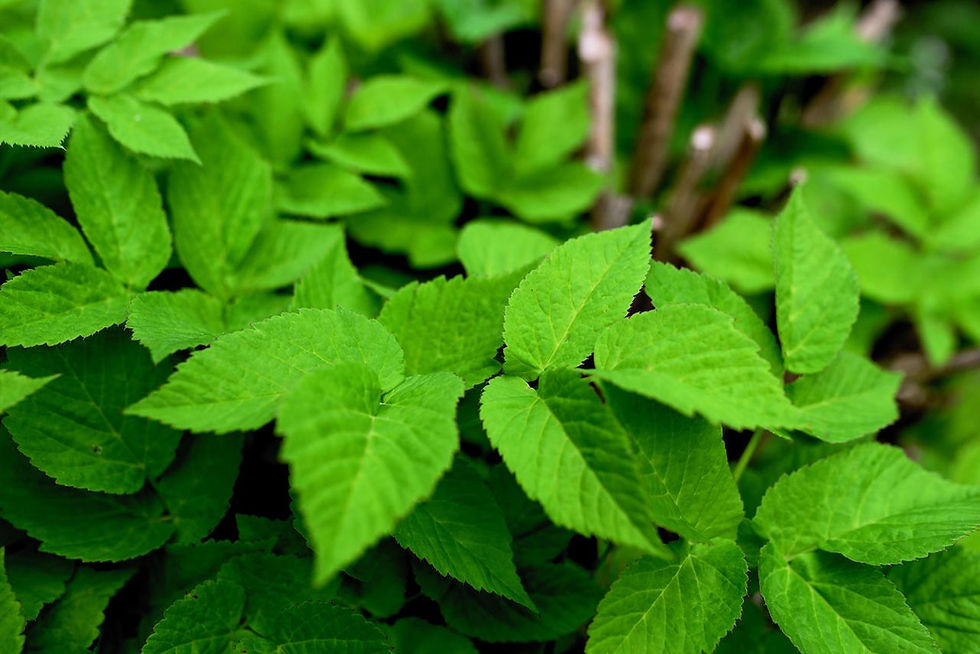
Ground elder is seen by many as a weed and is when a traditional gardener reaches for glyphosate[iv] weed killer. That is not something I encourage. On my land the weed killer I use has two legs and does not come from a bottle. To a forager, young ground elder leaves are especially tasty and ideal for salads. When the leaves become older, they can be cooked like spinach but once the leaves are coarse and papery they are best left untouched[v].
Wild garlic
The Grizedale foragers were also seeking wild garlic (Allium ursinum), whose leaves were just appearing. Although times vary because of the weather, wild garlic tends to feature in early March, and flowers a month or two later.

By June, it has usually gone. As with ground elder, it is best to pick wild garlic leaves earlier in the season while they are still young and full of flavour. Older leaves become more astringent, although are still perfectly edible and suitable for cooking. Later in the season it is worth picking wild garlic flowers, as they also have many uses in the kitchen and make an attractive, tasty garnish[vi].
Effects of mankind
Grizedale Forest was highly scenic when I first arrived, but slowly a plentiful supply of visitors appeared, and I began feeling doubtful. There was no Grizedale Hall any longer but there were at least two cafés, dozens of mountain bikers, scores of walkers, and zipwires that traversed the woods. These were to permit the more adventurous to have an ape-like experience and see the area from up high and at speed.
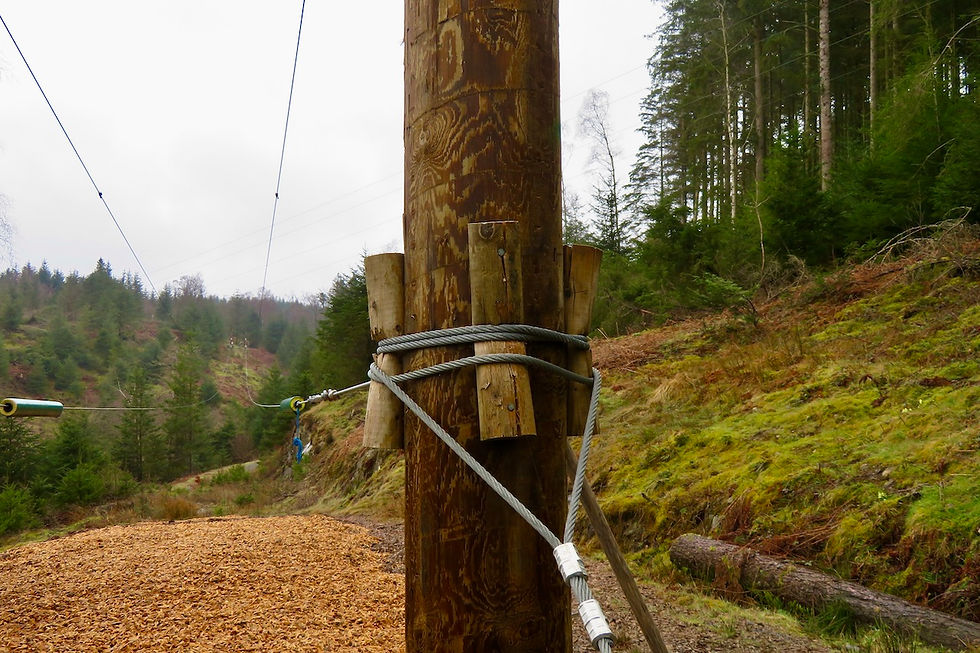
There were some paths signposted “No Entry” to anyone other than those who sought the overhead experience. Scattered through the woods were multiple sculptures, perhaps about 60, 4x4 drivers were churning up gravelly lanes in their ancient Landrovers, I saw several discarded doggy poo bags, and the foresters were using plastic tree tubes. Once I started looking, there was little positive to see. Driven by modern economics, Grizedale Forest had turned itself over to mankind, had become a huge playground and was losing its natural feel. Yet what Grizedale also did was highlight mankind’s failure to resolve the planet’s most critical problem - climate change. It was a prime example of climate apathy.
Climate apathy
Mankind is essentially a selfish animal and yet, during the COVID-19 pandemic, and instructed by respective politicians, our species did what was needed, and the pandemic came under control. Not without problems, but there was universal action taken, at least by the majority. That has not happened with climate. Although COVID-19 was more easily recognised as an immediate crisis, seeing climate change as a future problem instead of a current, urgent one is dangerous. Enormous wildfires, violent storms, flooding, drought, heat waves, food insecurity, water shortages, health impacts of pollution and more pose challenges to fragile economic and healthcare systems. These challenges will grow in intensity as climate change worsens and that can already be seen. While individuals can take precautions to protect themselves from a virus, it is impossible for them to avoid the effects of climate change[vii].

Psychologists continue to analyse why mankind is so inert when it comes to resolving climate change. Scepticism and denial are an exaggerated ostrich effect, where adherents are driven to avoid learning about a specific problem and actively seek a safer narrative. Challenging such scepticism with information is counterproductive[viii]. It is completely clear that the rate of mitigation needs to increase, and that the international community must urgently reduce greenhouse gas emissions. This implies wholesale societal changes, without which climate change will continue and probably accelerate. These changes will need major adjustments to energy, industry, transport, food, political, and financial systems[ix].
What is more, fossil fuels appear to do mankind real harm and affect hormonal function. This has led to increasing risks to health, including cancers, cardiovascular disease, and infertility[x]. Fossil fuels must go - and fast. Petrochemicals are killing mankind[xi]. I wish I could write differently, but I do not see such changes happening, which is why the only way for mankind is down. How I hope I am wrong.
By the time I had completed my walk around the paths and woodland of Grizedale, and there are many different routes for all standards of walker, even those with wheels, my mind was filled with the improbability of mankind acting in sufficient time to reverse the problems he has created. Surrounding me in Grizedale Forest was evidence of the selfish behaviour of my species, almost wherever I looked. Environmental protection and climate change were not on any agenda, other than occasional chit-chat followed by inaction.
Nature takes action
While mankind talks the talk but does not walk the walk, Nature is doing something, at least as best she can. At Grizedale some flowers had got it wrong and were appearing well before I had expected, likely thanks to a warming climate. There were two daisies (Bellis perennis L), hidden in a small depression, which were slowly opening as daylight took hold. I was visiting in the early morning and would normally expect to see daisies in late spring or summer, not in mid-March. The flowers are insect pollinated and self-compatible. This term refers to a plant whose pollen can fertilise eggs of the same plant[xii]. Daisies are principally self-pollinated, but some cross-pollination can occur. The flower heads close at night and in wet weather while seed is shed from May onwards[xiii].

Even more surprising was the purplish colour of sea thrift (Armeria maritima), which I would not expect to see before April, and have never seen in woodland anyway. I will see it on maritime cliffs, in salt marshes and beside coastal paths, as it thrives in dry, sandy, and salty conditions[xiv]. There is none of that in Grizedale and yet there it was, as clear as day. Climate change had fooled it. Sea thrift self-seeds readily, which is its mode of spread[xv].
Insects are disappearing
I saw barely any insects in Grizedale, which did not surprise me. For nearly forty years, scientists across the globe have witnessed a concerning decline in insect populations[xvi]. The decline is now a plummet. More than 40% of insect species are threatened with extinction[xvii]and a third are endangered, with a rate of extinction eight times faster than that seen for mammals, birds, and reptiles. The total quantity of insects is falling by a massive 2.5% a year, suggesting that insects could vanish within 100 years[xviii]. Loss of insects means reduced pollination and research now shows that a decline of pollinators is ongoing across the globe[xix].
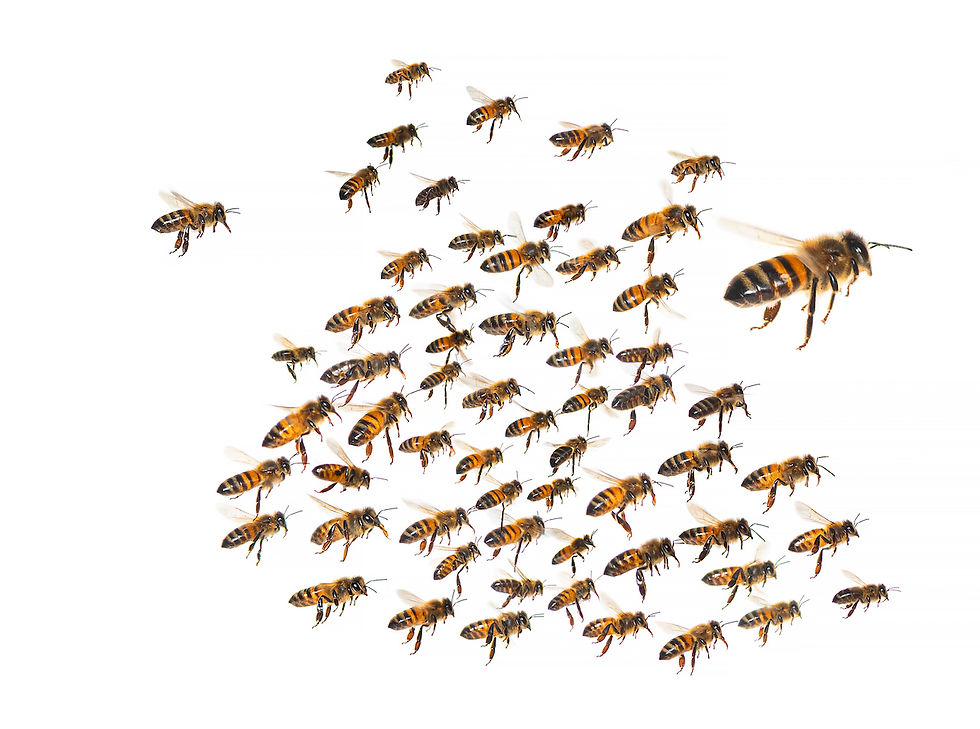
In the world of plants are angiosperms and gymnosperms. Angiosperms are plants that produce flowers and bear their seeds in fruits. They are the largest and most diverse group within the kingdom Plantae. More than 80% of extant angiosperms[xx] rely on animals for pollination[xxi]. Meanwhile gymnosperm seeds are usually formed in unisexual cones, known as strobili, and the plants lack fruits and flowers[xxii]. However, gymnosperms[xxiii] also rely on pollinators and are either wind-pollinated (anemophilous) or both wind- and insect-pollinated (ambophilous).
The lack of pollinators directly affects the reproductive activities of both angiosperms and gymnosperms, so some plants are being proactive. An excellent example is the field pansy (Viola arvensis), an angiosperm, for which a French study has shown the flower’s petals are becoming smaller as it relies less on pollinators and more on itself. This is a so-called selfing syndrome and describes the change from outbreeding (also called xenogamy or allogamy) to autogamous selfing, i.e. selfing within a hermaphroditic flower.
Predominantly selfing species often have smaller flowers than their outbreeding relatives and these flowers tend to open less. They also show a reduced pollen-to-ovule ratio, usually because of reduced pollen production, and they produce less nectar and scent. The association of these floral traits with a high selfing rate has been demonstrated in many genera[xxiv]. Other species that can self-pollinate include orchids (Orchidaceae), Red Shepherd’s Purse (Capsella rubella), mouse-ear cress (Arabidopsis thaliana), sunflowers (Helianthus annuus L.), peanuts (Arachis hypogaea), potatoes (Solanum tuberosum) and so many others. Self-pollination is an evolutionary process, and the field pansy shows this well.
The woodland
Grizedale is predominantly known for its woodland, and there is plenty of it, even if mankind is muscling in. There are several different species of tree to find, with the species composition reflecting Grizedale’s position as a productive forest.
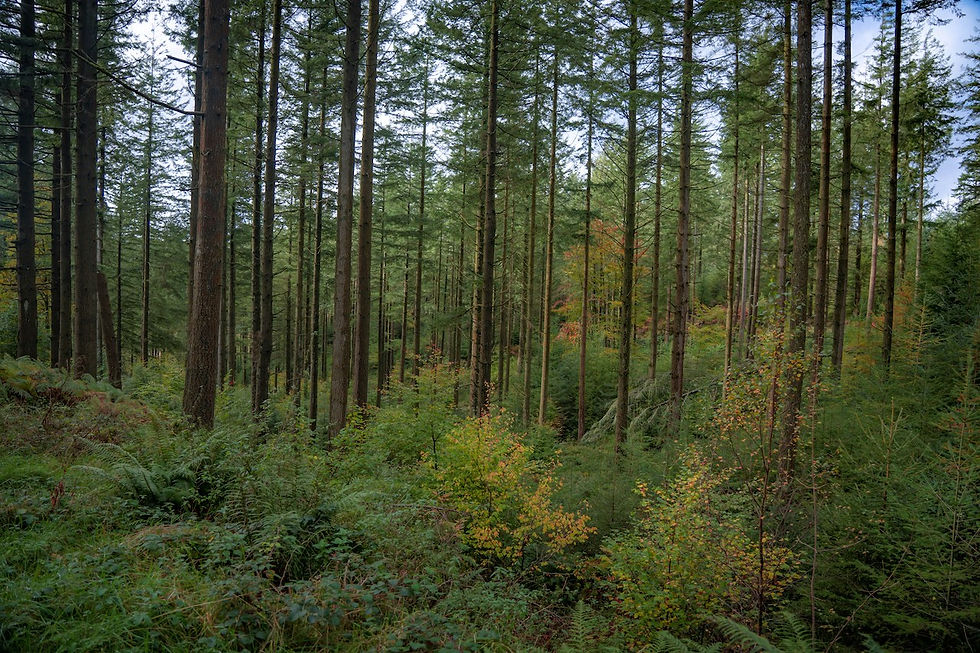
Coniferous tree species dominate Grizedale, with Sitka spruce making up roughly half of the wooded area. Historically, larch was also common in Grizedale but outbreaks of Phytophthora ramorum in the last decade have proven this species to no longer be viable. Infection by Phytophthora is exacerbated by climate change. Plant health notices and associated felling resulted in the amount of larch falling from 15% of the forest in 2020, to less than 5% by 2023.
Most of the current trees in Grizedale were planted post-1990 and represent the second rotation of modern forestry in the area. The main initial planting programmes were completed between 1939 and 1955, with further acquisitions and planting continuing through the 1960s. Felling and restocking began in the 1980s.
Today, the distribution of tree species is approximately as follows: Sitka spruce 51%; Broadleaves 30%; Other Conifers 8%; Pines 7%; Larch 4%.
Yield class
Despite the large number of visitors to Grizedale, it is still a working, productive forest and its yield is thus important. Yield class is a common way of measuring this and describes the productive potential of trees. Yield class is measured in cubic metres per hectare per year (m3/ha/yr) and is divided into steps of 2m3/ha/yr. A yield class of 12m3/ha/yr, for example, means an annual timber increment of 12m3/ha/yr. Different species have different yields. Yield models are essential for demonstrating that ongoing management is consistent with the principles of sustainable forestry[xxv] and enable predictions to be made about rotation length and assessing how well a particular species is suited to a site[xxvi].
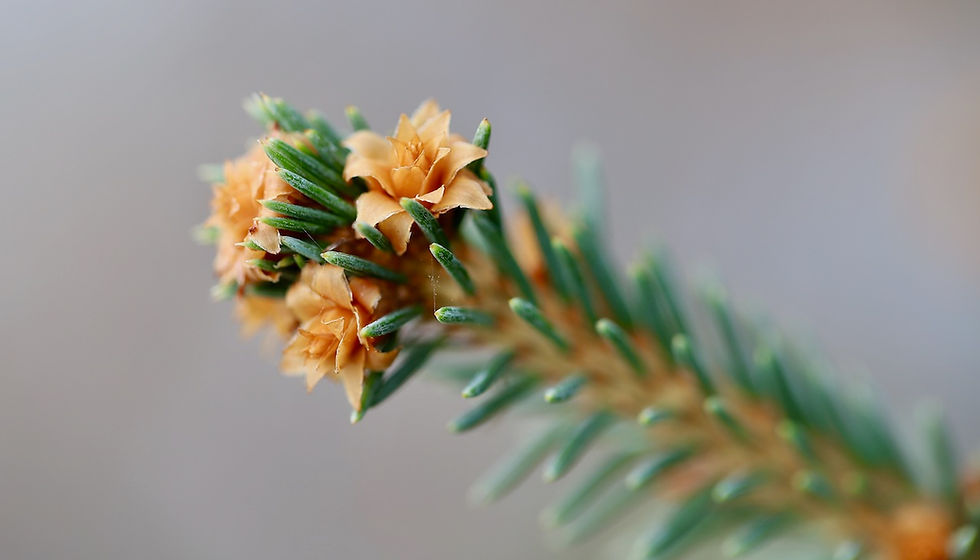
The average yield class across the productive species in Grizedale is 14m3/ha/yr. Sitka spruce has an average yield class of 18m3/ha/yr, with 18% of Sitka spruce being yield class 24m3/ha/yr or above. Many of the lower yield classes in Grizedale are found within the mixed broadleaf crops, but many deciduous hardwoods may only achieve a yield class 4 or 6m3/ha/yr. Softwood is a term used to describe timber sourced from coniferous or needle-leaved trees. Hardwood is sourced from deciduous and evergreen broad-leaved trees. Hardwoods tend to be denser than softwoods, making them sturdier and more weather resistant[xxvii].
Yield class is normally measured by monitoring the growth rates of trees in a stand over a period of several years. A stand is a contiguous community of trees sufficiently uniform in composition, structure, age, size, class, distribution, spatial arrangement, condition, or location, on a site of uniform quality to distinguish it from adjacent communities[xxviii]. However, yield class may also be estimated more quickly by measuring the dominant height of a sample of trees in the stand. Trees will be taller than the average for their age on productive sites. Although tree height can be tricky to measure, especially in a dense stand, it is a better predictor of yield than any other parameter.
Fallen trees
There were many fallen trees in Grizedale, which I saw lying on the ground haphazardly almost wherever I looked. Storms are frequent in the Lake District and from time to time the forest is closed to visitors thanks to storm damage. Predicting the probability of wind damage in both natural and managed forests is important for understanding the functioning of a forest ecosystem, the environmental impact of storms, and for forest risk management[xxix].
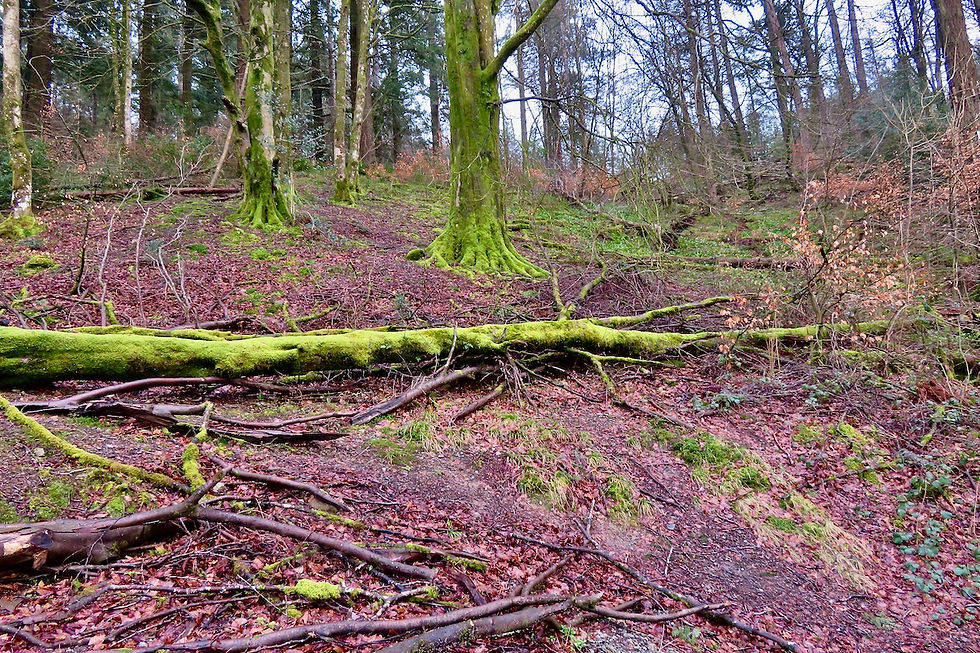
Once again, in forestry there is specific terminology. Windthrow describes trees that are uprooted by wind. Breakage of the tree bole (trunk) instead of uprooting is windsnap. When both windthrow and windsnap combine, blowdown has occurred[xxx]. As the prevailing weather in UK largely comes from the south-west[xxxi] there are significant areas of high risk in the west of Grizedale Forest, less so to the east. The management of damaged forest is different, depending on the level of risk an area of forest can experience[xxxii].
Climate change and woodland
Climate change comes into the equation, as increasing climate temperatures encourage some trees to grow faster and larger. Trees vary in their ability to absorb carbon dioxide and in how quickly they mature. Most productive woodlands comprise faster-growing, coniferous tree species, which trap carbon more rapidly in the short- to medium-term. At the same age, mature conifers that are perhaps aged 50 years, absorb significantly more carbon than slower-growing broadleaf tree species. Broadleaf trees, however, can store more carbon over the course of a century.

Conifer species thus have a significant role in rapidly sequestering carbon and achieving reforestation goals. However, despite their great productivity in collecting carbon, to develop massive forests of conifers may not be the best solution. This would ignore the benefits that a more varied mix can bring, such as enhancing biodiversity and wildlife habitats.
If the forestry sector is to help fight climate change, global woodland cover must increase from its current 13% to 19% by 2050, and with a 60:40 balance between broadleaf and conifers. An increase of this size would amount to nearly 1.5 million hectares (150,000km2) of new forest and land is required on which to plant these trees. Calculations have shown that 22% of farmland must be dedicated to carbon sequestration if net zero is the aim[xxxiii]. For reference, Greater London has an area of 1737.9 km2. You can see the problem.
Net zero
Net zero is frequently cited as the world’s target, yet climate scientists are beginning to wonder. Some have claimed that net zero is a daft objective and may be a dangerous trap. In principle there is nothing wrong about carbon dioxide removal proposals, some of which can feel tremendously exciting as science and engineering are attempting to save humanity from disaster. The problem comes when it is assumed these can be deployed on a huge scale as this serves as a blank cheque for the continued burning of fossil fuels. Policymakers and businesses appear to be entirely serious about deploying highly speculative technologies to land civilisation at a sustainable destination. In fact, these are no more than myths[xxxiv]. The only way to keep humanity safe is immediate, sustained, and radical cuts to greenhouse gas emissions in a socially just way[xxxv].
Sculpture in the Forest
Despite the acknowledged climate problem, yet almost nothing being done, Grizedale Forest shows further attempts by mankind to dominate the countryside, with numerous sculptures being scattered throughout the woodland. The forest is the largest site-related ‘Sculpture in the Forest’ exhibition in the country and has been awarded several prizes for its efforts.

The sculpture project was started in 1977 by the Grizedale Society[xxxvi] and does show an imaginative use of natural materials[xxxvii]. Some of the sculptures appear incongruous, but not many. The principle is that Nature will slowly replace the sculptures, one by one, although some sculptures have now been repaired multiple times despite Nature trying hard to take over.
The sculptures, each of which has been created by an established artist, are intended to provide moments of quiet contemplation. They are supposedly sited to give a sense that they have emerged from the land itself and are as much part of the landscape as the trees[xxxviii]. I am unsure that has been achieved, but I am just a writer.
Wildlife

Grizedale Forest is also a haven for a tremendous variety of wildlife and is home to squirrels, badgers, foxes, grouse, woodpeckers, deer, and so much more. It is a bird-watcher’s paradise, too. The forest is home to England’s only indigenous red deer herd, which can be spotted there throughout the year[xxxix]. I saw no deer but plenty of deer tracks, as well as evidence of one poor animal that had clearly become entangled in barbed wire, before pulling itself free. Rare white-faced darter dragonflies (Leucorrhinia dubia) now endangered[xl], have also been found by the forest tarns[xli], and can occasionally be seen from April until September. I saw none.
Final thoughts about Grizedale
My conclusions about Grizedale Forest? It was charming to see, easily worth a visit, but I left feeling depressed and overcome. Those who run the place have tried hard over many years to attract visitors and in numerical terms have been successful. Yet there are few better places in the land to witness how mankind has tried to dominate Nature, when in practice it is Nature that dominates mankind.
***
Hashtags
#GrizedaleForest #LakeDistrict #EnvironmentalConservation #ClimateChangeAwareness #NatureVsMan #SustainableForestry #WildlifeProtection #EcoTourism #HistoricalLandscapes #Foraging #PlantBiodiversity #InsectDecline #EcoArt #OutdoorRecreation #WeatherExtremes #CarbonSequestration #NetZeroGoals #WoodlandWalks #ConservationChallenges #ClimateActionNow
References
[i] Wikipedia. Grizedale Forest. See https://en.wikipedia.org/wiki/Grizedale_Forest. Accessed 15 March 2024.
[ii] Wikipedia. Franz von Werra. See https://en.wikipedia.org/wiki/Franz_von_Werra. Accessed 15 March 2024.
[iii] 1MDb. The One That Got Away. See https://www.imdb.com/title/tt0050803/mediaviewer/rm1586123776/?ref_=tt_ov_i. Accessed 15 March 2024.
[iv] lovethegarden. Ground elder. See https://www.lovethegarden.com/uk-en/garden-problem/ground-elder. Accessed 17 March 2024.
[v] See https://www.wildfooduk.com/edible-wild-plants/ground-elder/#:~:text=The%20young%20translucent%20leaves%20are,grow%20back%20in%20no%20time. Accessed 17 March 2024.
[vi] Coldstream H. How to forage for wild garlic. See https://www.greatbritishchefs.com/features/how-to-forage-wild-garlic. Accessed 17 March 2024.
[vii] Shasko L. COVID-19 and Climate Change: Turning apathy, anxiety, and anger into action. 23 September 2020. See https://www.schoolofpublicpolicy.sk.ca/csip/publications/making-waves/covid-19-and-climate-change.php. Accessed 17 March 2024.
[viii] Haltinner K, Sarathchandra D. Climate change skepticism as a psychological coping strategy. Sociology Compass. 2018 Jun;12(6):e12586.
[ix] Gabric AJ. The Climate Change Crisis: A Review of Its Causes and Possible Responses. Atmosphere. 2023 Jun 27;14(7):1081.
[x] Woodruff TJ. Health Effects of Fossil Fuel–Derived Endocrine Disruptors. New England Journal of Medicine. 2024 Mar 7;390(10):922-33.
[xi] Gross L. Petrochemicals Are Killing Us, a New Report Warns in the New England Journal of Medicine. Inside Climate News. 18 March 2024. See https://insideclimatenews.org/news/18032024/fossil-fuels-toxic-chemicals-deadly-diseases/. Accessed 20 March 2024.
[xii] NYBG Steere Herbarium. See https://sweetgum.nybg.org/science/glossary/glossary-details/?irn=1433#:~:text=Definition,Compare%20with%20self%2Dincompatible. Accessed 20 March 2024.
[xiii] Garden organic. Daisy. See https://www.gardenorganic.org.uk/expert-advice/garden-management/weeds/weed-datasheets/daisy#:~:text=Daisy%20flowers%20from%20March%20to,night%20and%20in%20wet%20weather. Accessed 17 March 2024.
[xiv] Royal Botanic Gardens Kew. Thrift (Armeria martima). See https://www.kew.org/plants/thrift. Accessed 17 March 2024.
[xv] Shekhdar K. Armeria ‘Sea Thrift’. 2 January 2024. Horticulture magazine. See https://horticulture.co.uk/armeria/#:~:text=Do%20Armeria%20Plants%20Tend%20To,is%20its%20mode%20of%20spreading. Accessed 17 March 2024.
[xvi] Davies D. The world’s insect population is in decline—and that’s bad news for humans. NPR, February. 2022 Feb 24;24.
[xvii] Sánchez-Bayo F, Wyckhuys KA. Worldwide decline of the entomofauna: A review of its drivers. Biological conservation. 2019 Apr 1;232:8-27.
[xviii] Dobbs OL. This Flower Is Evolving to Survive a Post-Insect Environment. 1 March 2024. Seehttps://medium.com/symbiotica/this-flower-is-evolving-to-survive-a-post-insect-environment-fafcb6a676dc. Accessed 15 March 2024.
[xix] Acoca‐Pidolle S, Gauthier P, Devresse L, Deverge Merdrignac A, Pons V, Cheptou PO. Ongoing convergent evolution of a selfing syndrome threatens plant–pollinator interactions. New Phytologist. 2023 Oct 24.
[xx] angiosperm, any of about 300,000 species of flowering plants, the largest and most diverse group within the kingdom Plantae. Angiosperms represent approximately 80 percent of all the known green plants now living. The angiosperms are vascular seed plants in which the ovule (egg) is fertilized and develops into a seed in an enclosed hollow ovary. The ovary itself is usually enclosed in a flower, that part of the angiospermous plant that contains the male or female reproductive organs or both. See Cronquist A, , Stevenson DW , Berry PE, Zimmermann MH, Stevens P, Dilcher DL. "angiosperm". Encyclopedia Britannica, 16 Feb. 2024, https://www.britannica.com/plant/angiosperm. Accessed 19 March 2024.
[xxi] Ollerton J, Winfree R, Tarrant S. How many flowering plants are pollinated by animals? Oikos 2011; 120: 321–326.
[xxii] Britannica, The Editors of Encyclopaedia. "How are angiosperms different than gymnosperms?". Encyclopedia Britannica, 21 Jun. 2019, https://www.britannica.com/question/How-are-angiosperms-different-than-gymnosperms. Accessed 19 March 2024.
[xxiii] Delevoryas T. Gymnosperm. See https://www.britannica.com/plant/gymnosperm. Accessed 19 March 2024.
[xxiv] Sicard A, Lenhard M. The selfing syndrome: a model for studying the genetic and evolutionary basis of morphological adaptation in plants. Annals of botany. 2011 Jun 1;107(9):1433-43.
[xxv] Forestry Commission. Forest Yield. See https://cdn.forestresearch.gov.uk/2022/02/fcbk048.pdf. Accessed 18 March 2024.
[xxvi] Using a database to make simple projections. See https://users.ox.ac.uk/~ndbrown/mapinfo/tutorial6.htm. Accessed 15 March 2024
[xxvii] Parsons Joinery. Hardwood Vs Softwood. See https://parsonsjoinery.com/about-wood/hardwood-versus-softwood#:~:text=Softwood%20is%20a%20term%20used,sturdier%20and%20more%20weather%20resistant. Accessed 20 Karch 2024.
[xxviii] Wikipedia. Forest stand. See https://en.wikipedia.org/wiki/Forest_stand. Accessed 18 March 2024.
[xxix] Hale SE, Gardiner B, Peace A, Nicoll B, Taylor P, Pizzirani S. Comparison and validation of three versions of a forest wind risk model. Environmental Modelling & Software. 2015 Jun 1;68:27-41.
[xxx] Wikipedia. Windthrow. See https://en.wikipedia.org/wiki/Windthrow#:~:text=Blowdown%20refers%20to%20both%20windthrow%20and%20windsnap. Accessed 18 March 2024.
[xxxi] Bitesize. Factors effecting the unique climate of the UK. See https://www.bbc.co.uk/bitesize/guides/zyd8frd/revision/2#. Accessed 18 March 2024.
[xxxii] Forestry England. Grizedale Forest Plan 2023. See https://www.forestryengland.uk/sites/default/files/documents/Grizedale_FP_2023_FINAL_reduced.pdf. Accessed 15 March 2024
[xxxiii] Quercus. Commercial forestry is a vital weapon in the fight against climate change. 24 October 2022. See https://quercusfp.com/commercial-forestry-is-a-vital-weapon-in-the-fight-against-climate-change/#:~:text=The%20“yield%20class”%20indicates%20the,in%20terms%20of%20absorbing%20carbon. Accessed 18 March 2024.
[xxxiv] Dyke J, Watson R, Knorr W. Climate scientists: concept of net zero is a dangerous trap. The Conversation 22 April 2021. See https://theconversation.com/climate-scientists-concept-of-net-zero-is-a-dangerous-trap-157368. Accessed 18 March 2024.
[xxxv] Simmons D. What is ‘climate justice’. 29 July 2020. See https://yaleclimateconnections.org/2020/07/what-is-climate-justice/. Accessed 18 March 2024.
[xxxvi] Grizedale Society. See https://grizedaleforestsculpturepark.wordpress.com/grizedale-society-overview/. Accessed 20 March 2024.
[xxxvii] Visit Cumbria. Grizedale Forest Visitor Centre. See https://www.visitcumbria.com/sl/grizedale-forest/. Accessed 15 March 2024.
[xxxviii] Visit Lake District. See https://www.visitlakedistrict.com/things-to-do/arts-and-culture/enjoy-a-cultural-sculptural-day-out-in-grizedale. Accessed 15 March 2024.
[xxxix] The Lakeland Cottage Company. A guide to Grizedale Forest. See https://www.lakeland-cottage-company.co.uk/guides/the-grizedale-forest#:~:text=Red%20Deer%20%2D%20Grizedale%20is%20home,red%20coat%20turns%20to%20grey. Accessed 19 March 2024.
[xl] British Dragonfly Society. White-faced Darter. See https://british-dragonflies.org.uk/species/white-faced-darter/. Accessed 19 March 2024.
[xli] English Lakes. Grizedale Forest. See https://www.english-lakes.com/grizedale_forest.html. Accessed 15 March 2024.

Comments